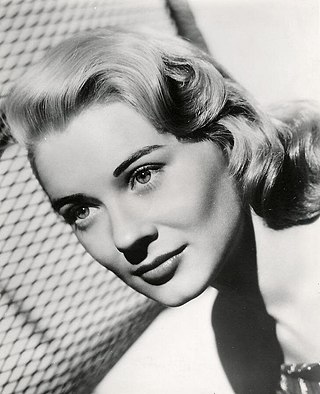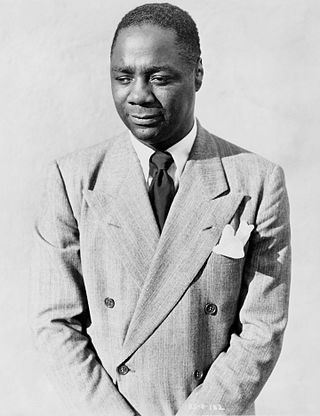Related Research Articles

Hope Elise Ross Lange was an American film, stage, and television actress. She was nominated for the Golden Globe Award for Best Supporting Actress and the Academy Award for Best Supporting Actress for her portrayal of Selena Cross in the 1957 film Peyton Place. In 1969 and 1970, she won the Primetime Emmy Award for Outstanding Lead Actress in a Comedy Series for her role as Carolyn Muir in the sitcom The Ghost & Mrs. Muir.

Flower Drum Song was the eighth musical by the team of Rodgers and Hammerstein. It is based on the 1957 novel, The Flower Drum Song, by Chinese-American author C. Y. Lee. It premiered on Broadway in 1958 and was then performed in the West End and on tour. It was adapted for a 1961 musical film.

Thomas Gomez was an American actor.

The Bernard B. Jacobs Theatre is a Broadway theater at 242 West 45th Street in the Theater District of Midtown Manhattan in New York City. Opened in 1927, the theater was designed by Herbert J. Krapp in a Spanish style and was built for real-estate developer Irwin S. Chanin. It has 1,100 seats across two levels and is operated by The Shubert Organization. Both the facade and the auditorium interior are New York City landmarks.

Canada Lee was an American professional boxer and then an actor who pioneered roles for African Americans. After careers as a jockey, boxer and musician, he became an actor in the Federal Theatre Project, including the 1936 production of Macbeth adapted and directed by Orson Welles. Lee later starred in Welles's original Broadway production of Native Son (1941). A champion of civil rights in the 1930s and 1940s, Lee was blacklisted and died shortly before he was scheduled to appear before the House Un-American Activities Committee. He advanced the African American tradition in theatre pioneered by such actors as Paul Robeson. Lee was the father of actor Carl Lee.

Pipe Dream is the seventh musical by the team of Richard Rodgers and Oscar Hammerstein II; it premiered on Broadway on November 30, 1955. The work is based on John Steinbeck's novel Sweet Thursday—Steinbeck wrote the novel, a sequel to Cannery Row, in the hope of having it adapted into a musical. Set in Monterey, California, the musical tells the story of the romance between Doc, a marine biologist, and Suzy, who in the novel is a prostitute; her profession is only alluded to in the stage work. Pipe Dream was not an outright flop but was a financial disaster for Rodgers and Hammerstein.
Allyn Ann McLerie was a Canadian-born American actress, singer and dancer who worked with many of Golden Age musical theatre's major choreographers, including George Balanchine, Agnes de Mille, and Jerome Robbins.

Merton of the Movies is a 1924 American comedy film directed by James Cruze, written by Walter Woods, and starring Glenn Hunter and Viola Dana. It is based on the George S. Kaufman and Marc Connelly 1922 play of the same name, which in turn was based on Harry Leon Wilson's novel, also titled Merton of the Movies.

Rita Gardner was an American actress and singer.

Richard Walton Tully was an American playwright.
Lawrence Holofcener was an American-British sculptor, poet, lyricist, playwright, novelist, actor and director. He held British and American dual citizenship.
William Barr Friedlander was an American songwriter and theater producer who staged many Broadway shows in the 1920s and 1930s. Most of them were musical comedies. Early successes included Moonlight (1924) and Mercenary Mary (1925). Later productions received mixed reception. His longest-running production was the comedy Separate Rooms, which ran from March 1940 to September 1941.

A Gentleman from Mississippi is a 1908 comedic play by Harrison Rhodes and Thomas A. Wise. It was popular when released, debuting on Broadway on September 28, 1908, and playing for 407 performances at the Bijou Theatre, and on the roof garden of the New Amsterdam Theatre during the summer of 1909. Douglas Fairbanks played the leading role of Bud Haines.
Merton of the Movies is a comic novel by Harry Leon Wilson. It was adapted into a stage play and three films. Wilson, a writer and novelist, wrote the book after a brief stint in Hollywood. Merton of the Movies was published in the Saturday Evening Post in 1919 and published as a book in 1922. Thomas Hischak described Merton of the Movies as a "light-hearted romp" with characters "cartoonish but endearing". According to American novelist Gertrude Stein, Merton of the Movies is "the best description of America that has ever been done". The novel sold millions of copies and has been adapted to other media several times.
Merton of the Movies is a 1922 satirical comedy play by George S. Kaufman and Marc Connelly. It was adapted from the novel of the same name.
Patrick Kearney was an American playwright.

Ida St. Leon was an Australian circus performer and actress.

Florence E. "Flo" Sundstrom was an American actress who had an active career in theatre, television, and film. A prominent character actress on Broadway from 1936-1959, she notably created the roles of Bella in the world premiere of Anita Loos's Happy Birthday in 1946, Bessie in the world premiere of Tennessee Williams's The Rose Tattoo in 1951, and Mrs. Marie "Fatty" Pert in Ketti Frings's Look Homeward, Angel in 1957. She made her film debut as Flora in the film adaptation of The Rose Tattoo in 1955, and thereafter remained active as a character actress in American television and film into the 1990s. She was a main cast member in the 1955–1956 season of The Life of Riley, portraying a new neighbor of the Riley family.

The First Year is a 1920 American comedic play written by Frank Craven, and produced by John Golden and directed by Winchell Smith on Broadway. It was a hit on Broadway, running for 729 performances.
Gates and Morange was a New York City based firm of designers and builders established in 1894 by brothers Frank E. Gates and Richard H. Gates, and the artist Edward A. Morange. The firm had a prolific career as scenic designers for Broadway from the 1890s through the 1930s; creating sets for more than 50 productions. The firm also created designs for trade shows, exhibitions, and businesses. While the organization's work as set designers ended after the mid-1930s, the firm continued to operate in other capacities until it closed in 1953.
References
- 1 2 3 "The Flowers of Virtue". Billboard. February 14, 1942. p. 10. Retrieved February 7, 2017.
- 1 2 3 4 Burns Mangle (February 15, 1942). "New Connelly Play Closes After Three Performances". Chicago Tribune. Retrieved February 7, 2017.
- 1 2 Hischak, Thomas S. (2008). Broadway Plays and Musicals: Descriptions and Essential Facts of More Than 14,000 Shows Through 2007. McFarland. p. 147. ISBN 978-0786497546 . Retrieved February 7, 2017.
- 1 2 Bordman, Gerald (1996). American Theatre: A Chronicle of Comedy and Drama, 1930-1969. Oxford University Press. p. 211. ISBN 978-0195090796 . Retrieved February 7, 2017.
- ↑ The flowers of virtue. OL 25113282M.
- 1 2 "The Flowers of Virtue". IBDb (Internet Broadway Database). Retrieved February 7, 2017.
- ↑ "The Flowers of Virtue". Playbill. Retrieved February 7, 2017.
- ↑ Eleanor Roosevelt (January 21, 1942). "My Day by Eleanor Roosevelt – January 21, 1942". United Feature Syndicate. Retrieved February 7, 2017.
- ↑ Eugene Burr (June 13, 1942). "From Out Front". Billboard. p. 9. Retrieved February 7, 2017.
- ↑ Eugene Burr (June 6, 1942). "From Out Front". Billboard. p. 10. Retrieved February 7, 2017.